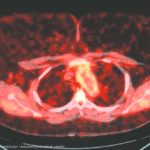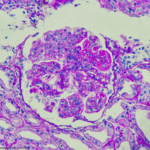An ACR-led resolution that calls for the protection of NIH funding and the ability to negotiate indirect costs will become AMA policy, along with several other resolutions supported by the ACR.

Subcategories:Clinical Criteria/GuidelinesEthicsLegal UpdatesLegislation & AdvocacyMeeting ReportsResearch Rheum
The ACR/CHEST ILD Guidelines in Practice, a video
In collaboration with the American College of Chest Physicians, the ACR released two new comprehensive guidelines aimed at improving the screening, monitoring, and treatment of patients with interstitial lung disease (ILD) secondary to systemic autoimmune rheumatic diseases (SARDs). Recently, Sindhu R. Johnson, MD, PhD, professor of medicine at the University of Toronto, Canada, director of the Toronto Scleroderma Program and principal investigator for the guideline, and Elana J. Bernstein, MD, MSc, Florence Irving associate professor of medicine in the Division of Rheumatology at Columbia University, New York City, and co-first author, presented a webinar to talk about how the guidelines were developed and present some of the recommendations and their rationale: Watch the recording now!

An ACR-led resolution that calls for the protection of NIH funding and the ability to negotiate indirect costs will become AMA policy, along with several other resolutions supported by the ACR.
In May, the Trump administration published an executive order requiring drug companies to bring prices in line with those paid by other developed nations, otherwise known as Most Favored Nation (MFN) pricing. Although the June 11 deadline has come and gone, no details have been released as to whether drug companies have opted to negotiate or if the government will implement any enforcement action.
A temporary suspension of new interviews for J-1 visas and an ongoing travel ban preventing nationals of 12 countries from entering the U.S. are likely to have a range of impacts on graduate medical training, the rheumatology workforce and research collaborations.
Issues discussed at a meeting with the Office of Management & Budget included increasing Medicare reimbursement for physicians, telemedicine permanence, removing G2211 restrictions, adequate reimbursement for therapies and more flexibility for chemotherapy administration codes. The proposed rule is currently under review by the OMB, which is usually the last step prior to releasing publicly for stakeholder review and comment.
Joseph Cantrell, JD |
Signed into law in April, the legislation will ban direct and indirect PBM ownership of pharmacies, effective Jan. 1, 2026. It addresses longstanding concerns about conflicts of interest, market consolidation and patient access created by vertically integrated PBM pharmacy models.

Katherine Terracina, MD, & Prajakta P. Masurkar, PhD |
In addition to the impediments to consistent, high-quality care suffered by all incarcerated individuals, incarcerated patients with rheumatic disease face challenges specific to the treatment, management & monitoring of rheumatic conditions.

Bryn Nelson, PhD |
Recent research led to development of a cumulative genetic risk score for Takayasu arteritis, identifying differing susceptibility between groups with different genetic ancestries.

At a session of ACR Convergence 2024, speakers shared key elements of the new guideline on the screening, treatment and overall management of lupus nephritis in children and adults.1 This guideline attempts to balance the risks of medication side effects with the important goal of preserving kidney function. This is the ACR’s first lupus guideline…

AURORA 2 Voclosporin, a novel calcineurin inhibitor (CNI), is associated with a favorable metabolic profile with regard to lipids and glucose, and a predictable pharmacokinetic profile, resulting in no need for the therapeutic drug monitoring required of other CNIs. AURORA 2, a double-blind, phase 3 study, evaluated the longterm safety, tolerability and efficacy of voclosporin…

In this study, Fava et al. investigated longitudinal autoantibody profiles in a racially diverse cohort of patients with lupus nephritis to define noninvasive serological biomarkers of histologic class and one-year treatment response to standard of care. In addition, the researchers determined how these biomarkers changed over time to provide further insights into treatment response and…